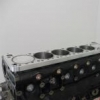Announcements
-
Similar Content
-
Latest Posts
-
Hi all. I had to chamge fuel pump due to car sitting for 10.years and went the 460. From memory it had the slightly smaller walbro in it previously. Running bosch 2200 injectors and a turbosmart compact fpr. Problem is no2 I can't get base pressure below 70psi. If I disconnect return line from fpr pressure drops indication restriction. I've inspected.the fuel line and removed the pipe on return line in tank and no chamge. Surely I'm not the only o e using stockings on a 460? Could the fpr be too small to handle the flow of new pump ? I'd like to sort it rather than going back.to smaller pump.
-
I just did the R35 coil pack conversion with Hitachi coils. Now I'm getting TCS, slip and cel lights on. Car runs great and better than before on factory coil packs. Has anyone else ran into this issue?
-
By Dose Pipe Sutututu · Posted
haha I held off on getting a dash for a while because I didn't like the iC7, and I knew Haltech were going to bring out another dash. I just don't know how this will actually fit in the R33
-









Recommended Posts
Create an account or sign in to comment
You need to be a member in order to leave a comment
Create an account
Sign up for a new account in our community. It's easy!
Register a new accountSign in
Already have an account? Sign in here.
Sign In Now